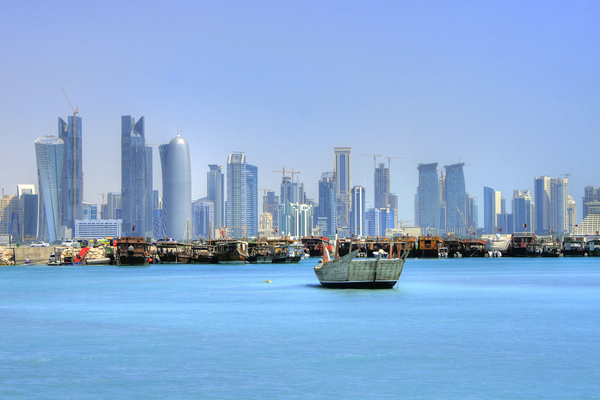
Qatar residential market softens in Q4 amid oil slump
DOHA, April 18, 2016
The residential market in Qatar showed signs of softening during the fourth quarter of 2015 due to falling oil prices and, yet, maintained high levels of demand due to the country’s strong population growth.
Official government statistics show that the country’s population totalled 2.42 million at the end of December 2015, representing a eight per cent year-on-year (y-o-y) growth, said a report by leading consultancy PKF.
Qatar Central Bank’s real estate price index rose by 15.4 per cent y-o-y during the period, indicating an increase in the value of the country’s real estate market, stated PKF in its Market Mirror - Qatar.
Due to the on-going economic uncertainty in the region, coupled with extensive redundancies in the public, gas and oil sectors, there has been a noticable trend of residents relocating to secondary and more affordable localities, said a report.
As a result, vacancy rates in some prime residential areas increased, prompting some landlords to reduce their rentals slightly in order to attract and retain tenants, it added.
This temporary increase in vacancies, however, is expected to stabilise due to a projected strong growth in Qatar’s population.
On the other hand, demand for housing in more affordable areas, such as Al Mansoura and Najma, increased, resulting in high rental rate growth.
Overall, lease rates within the residential market of Qatar witnessed a marginal increase of one per cent in Q4, most perceptible in secondary locations. This trend is likely to persist in the short- to mid-term as the majority of the upcoming residential developments are targeted at higher-income tenants.
According to a third party report, monthly rents across the apartment segment ranged from QR8,000 to QR14,000 per month in Al Sadd area, while lease rates in more prominent areas such as Pearl Qatar and West Bay Lagoon ranged from QR14,000 – 20,000 per month.
A wave of new apartment supply is expected to enter the market on the Pearl Qatar during 2016, which may lead to a potential reduction in rental rates in this area.
On the hotel sector, PKF said the establishment supply in Qatar continued to expand resulting in a decline in several KPIs.
Based on data provided by a third party industry report, the total number of hotel room and hotel apartment keys in the country totalled 18,400 at the end of the fourth quarter of 2015, reflecting a 10 per cent y-o-y increase.
According to official statistics, released by Qatar Tourism Authority (QTA), the total number of visitors to Qatar in Q4 2015 stood at 680,266, down 7.9 per cent y-o-y over the same period last year.
The number of visitors from the GCC, other Arab countries and Americas witnessed a decline of three, 26 and six per cent respectively during the quarter, while the number of visitors from Europe rose by six per cent.
Due to an increase in hotel room supply throughout 2015, KPIs across the hotel sector in the country witnessed y-o-y declines, according to PKF.
One of the most notable new hotel establishments, which entered the market during the quarter, was the 187-key DoubleTree by Hilton Doha Old Town.
As far as new launches are concerned, Oberoi Group announced the signing of a management agreement for a 250-key luxury hotel in West Bay and a 148-key serviced apartment in Lusail.
In addition, Accor Hotels signed an agreement to operate the first Majlis Grand Mercure hotel in Doha, which will feature 223 rooms and 60 serviced apartments, it stated.
With regards to the future pipeline of hotel establishments in Qatar, a third party report estimated that the number of rooms under construction in November 2015 amounted to 6,976, spread across 29 hotel properties.
It has also been forecast that the number of hotel establishment keys in the country will increase by approximately 27 per cent during 2016 provided that all hotel properties, initially scheduled for completion during the year, materialise.
On the retail sector, the top consultancy said it continued to showcase positive growth indicators during the last quarter supported by increasing population figures and high levels of disposable income in Qatar.
Based on official QSA figures, the population of Qatar stood at 2.42 million at the end of December 2015, representing a y-o-y increase of eight per cent.
According to a third party report, lease rates in prime mall locations for line stores and anchor stores ranged from QR260 to 300 and from QR40 to 80 sq m per month, respectively.
Compared to figures from Q1 2015, when rental rates across line stores fell within the 220-250 rate bracket, average lease rates have witnessed an increase of 19 per cent throughout the year.
The rise in average rents and the high occupancy rates across the country’s major shopping centres can be mainly attributed to the limited retail space available and the fact that a number of retail outlets, initially slated for completion in 2015, were pushed back to 2016 or later.
On the office market, PKF said it witnessed a period of stagnation during Q4 2015 due to the sustained low oil prices, which resulted in subdued economic activity.
Demand for office space in the country decreased as government departments and oil and gas-related companies, which occupy the majority of the office space in West Bay, started to revise their budget activities and hold back on future expansion plans.
In addition, demand across private companies has also decreased throughout the year, resulting in office space enquiries concentrated around smaller units of less than 250 sq m, said the report.
Due to a limited new supply of office space in Qatar, lease rates across Grade A offices in the West Bay area remained relatively stable during Q4 and ranged from QR160 per sq m for larger offices up to QR280 for office space of less than 500 sq m in size.-TradeArabia News Service







